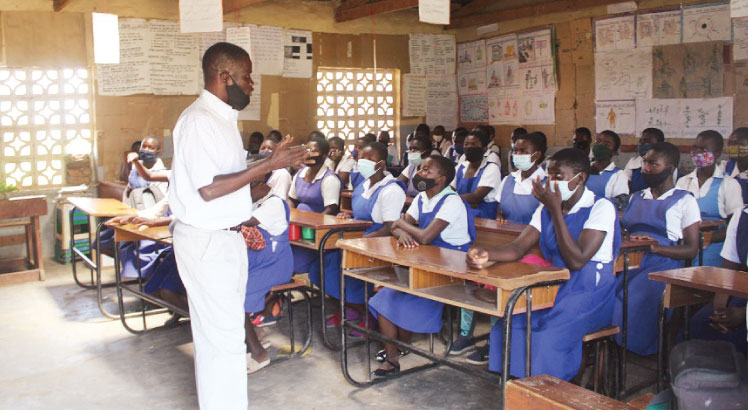Mpale’s smoky fire-fighting tactics

Fire that gutted Mpale was stoppable, but the accident is a necessary lesson.
For two years, Mpale Cultural Village in Mangochi was a focal point for visitors and residents craving to understand the Yao way of life.
From its mountaintop setting, Mpale’s wealth sparkled in a flash: A flurry of grass-thatched huts symbolizing the tribe’s original architecture; an auditorium where locals used to showcase tribal dances; lodging facilities for those fascinated by the cultural phenomenon and scenic Lake Malawi which can be seen from the brow; a museum exhibiting history of the tribe and vestiges of the implements used for fishing and hunting, waging war and preparing meals, circumcising the young ones and other initiation rites.
“And there’s so much more that attracts locals and townspeople every weekend,” bragged hotelier Sam Layison of the state-owned cultural village opened by former Minister of Tourism Daniel Liwimbi on November 24 2011.
That was in August.
Two months on, what started as a flickering flame at the bottom of Mpale Hill on Sunday destroyed fundamental facets of ‘the home of Yao culture’ which left awestruck Liwimbi proclaiming: “Every tribe needs a cultural village and plans are underway to ensure Ngoni’s have one similar to Mpale.”
Flames leaping up a hill secured by a firebreak. Winds hissing in the grass. Delays to confront or confine the blaze downhill. Stark ill-preparedness for the accident which workers termed ‘a common accident’. No firefighting skills. No requisite equipment. This is what it took for the priceless establishment to go up in smoke—a grave glimpse of how ill-prepared the lakeshore district, arguably the country’s tourism capital, is when it comes to fire and other emergencies.
“If only we had acted earlier, we would have saved the place which symbolises where we are coming from, who we are and everything our children need to know about their people. But it’s all finished,” sighed John Seleman as Mpale went up in raging flames.
‘It’s finished’ brings to mind the final words Jesus uttered on the cross. Yet Mpale was not only crucified by sheer lack of firebreaks between the hill’s grassy thickets and the vital buildings. A majority of people chose to look on as the fire escalated. Little did they act in time when artisans sighted the fire and called for help.
In the absence of hydrants, backup tanks constitute the nearest source of water for fire brigades. However, a worker was spotted using a low-pressure hose pipe as Seleman, aged about 70, whipped the raging flames with green leaves.
Just when the battle was almost won, village manager Skywell Makalande indicated that the fire was probably an act of vengeance by locals who had been caught stealing the previous day.
Yet you need to put fire in a bush dominated by dry grass on a windy day to understand why the lack of firebreaks could be to blame as well.
“It’s better to put in place preventive measures than bank on firefighters who might come late or not come at all when duty calls,” said Kabula Safety’s Chris Gondwe in an interview.
Wanton fire brands, rising on the back of whispering winds, defied the blurry clearance safeguarding the houses situated on the borders of the bushes characterising the baobab-barbed hill.
This, coupled with delays and lack of requisite firefighting skills, left concerned citizens hard pressed to contain a fire which had overcome a solitary fire extinguisher on site to burn down the auditorium where Seleman and company used to dance beni, mbwiza, manganje and other traditional beats. Only that this was a carbon dioxide extinguisher—with a black label.
“Carbon dioxide extinguishers are not ideal for fires involving grass or wood, but those caused by electrical faults. Bush fires require gushes of water at the base of the flame,” said Gondwe.
Water supply and pressure can be unpredictable at Mpale, the reason artisans were erecting the back-up tank when they first saw the fire. The fire brigade seemed beyond reach for Mpale workers who kept asking for numbers of firemen based at Club Makokola Airdrome and Malawi Defence Force’s Marine Camp in Monkey Bay.
Farcically, there was no ladder on the site when a well-wisher attempted to climb the roofs and pour a pail of water on a bonfire which brought down the thatch of the auditorium. They only sourced a wooden affair about 30 minutes later.
There was more, for instead of the skilled firefighters, they got police officers brandishing guns and an extinguisher similar to the one that had failed. Opportunely, the officer-in-charge of the team made a revealing confession in a telephone conversation with Mangochi district commissioner Bester Mandele.
He said: “Zikuchitika kuno ku Mangochi tiyalukapo ndithu [This will make Mangochi a laughing stock].”
Truly, this is the stuff of tragicomedies. Being no respecter of clueless hands, the bonfire escalated anyway, jumping from the auditorium to the museum, then to the stores and the houses. All over the place, except the lodging area. House by house, Mpale was reduced to ashes.
Gone with the imposing structures were the jobs that come with it, but one thing survived the fire: Mangochi, the face of Malawi’s tourism potential, needs a foolproof firefighting system to protect costly investments that dot the shoreline from stoppable mishaps like these.





